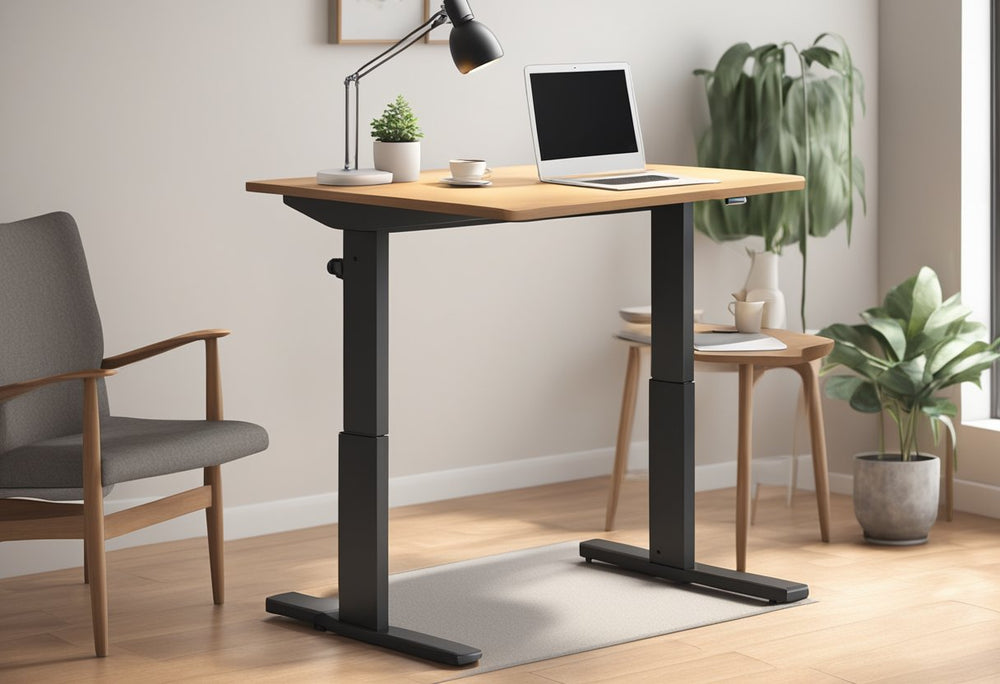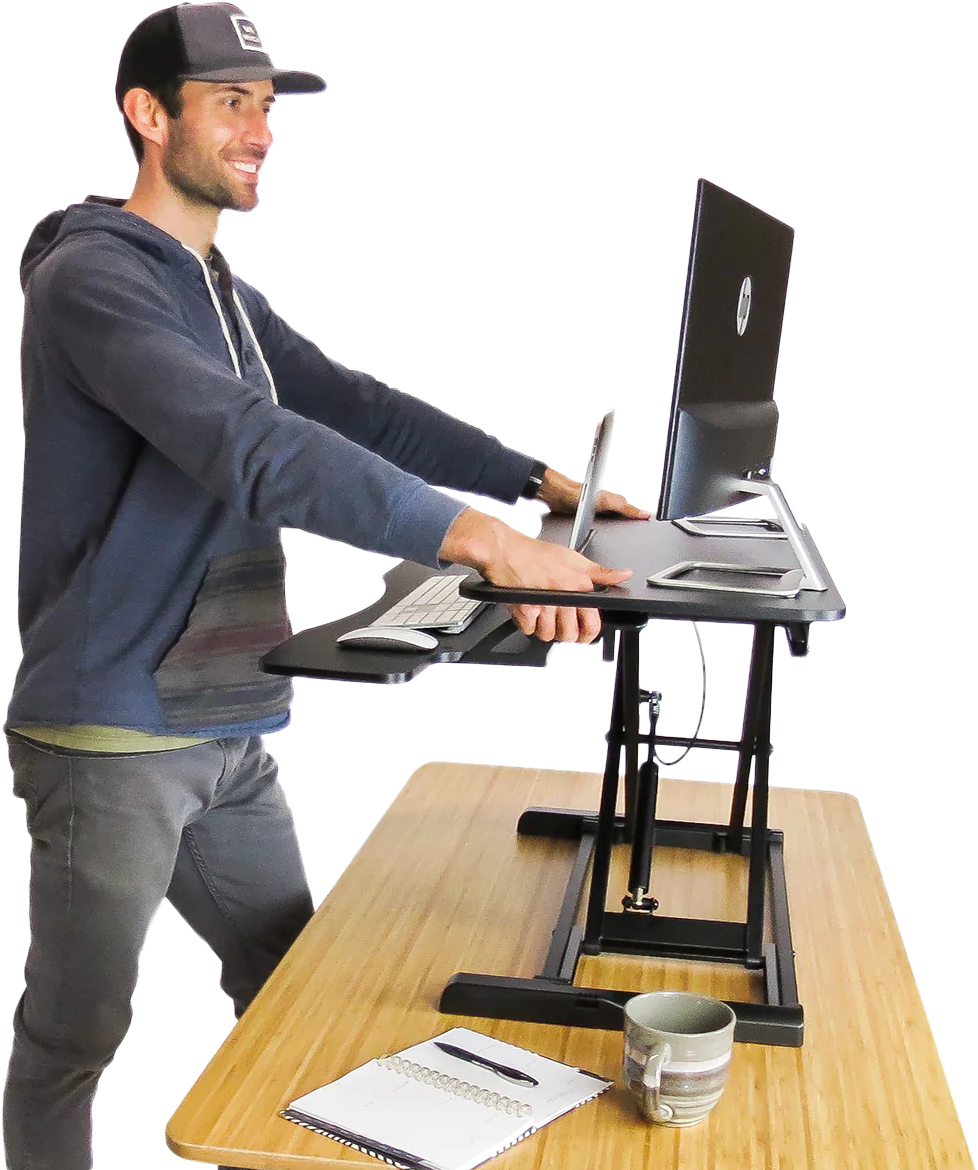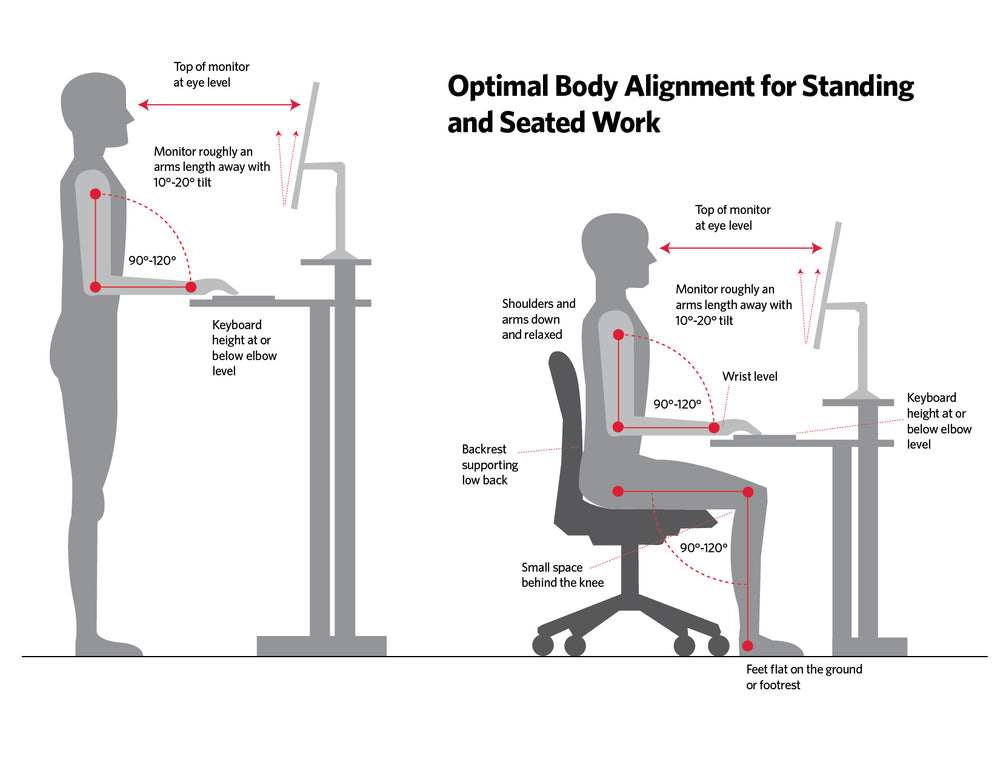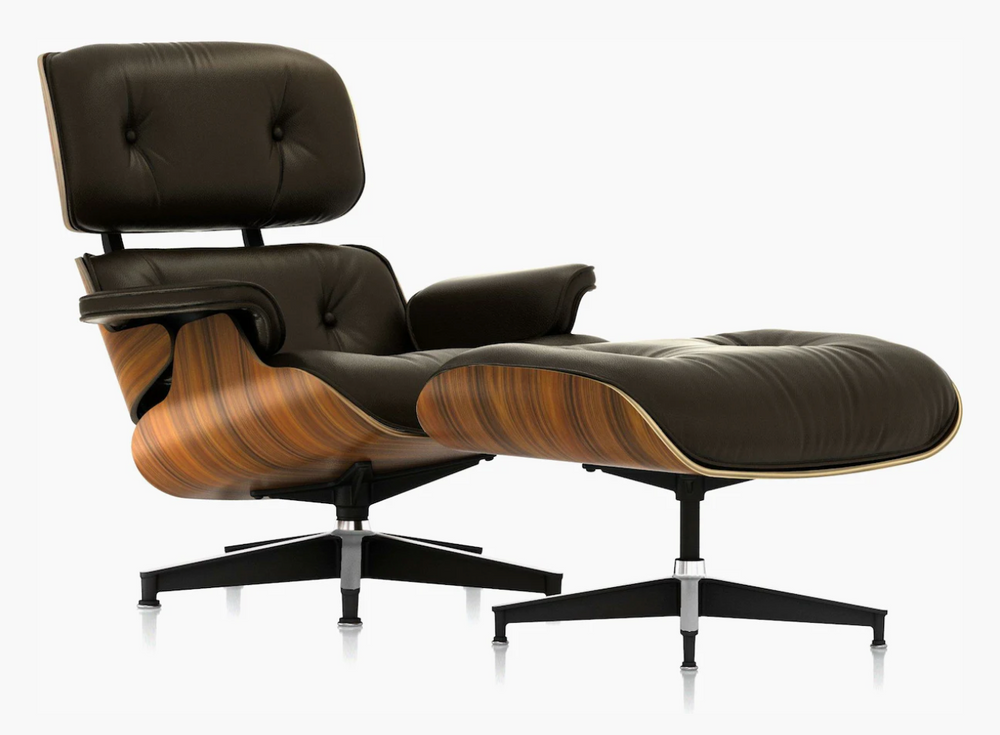Date: August 17, 2022
Whether you are an elite athlete or a verifiable couch potato, a common result of sedentary work environments is neck complications.
Researchers from the National Library of Medicine examined more than 500 office employees for work-related risk factors pertaining to neck pain. More than 60% were found to develop neck issues during the 12-month examination, with several going so far as to request leaves to recover from it.

Neck pain is highly correlated with intensive time on digital devices and computers. Throughout this piece, we’ll help you understand the root causes of this less noticeable health problem – neck pain. We’ll also try to answer the question, ‘Can a standing desk help with neck pain?’.
Table of Contents
Neck Issues are Commonplace with Office Workers
Significant research has been done on the detrimental effects of the modern workplace. It turns out that sitting in one place and staring at a computer screen for long hours is bad for your health. Shocking, I know.
A study published in the NCBI highlighted neck problems that can manifest while sitting for extended periods. To mitigate these problems, you must look at setting up an ergonomic workstation. That includes having your keyboard and mouse near chest height.

Did you know that if you do not have your monitor positioned so that you are looking forward on a flat plane and instead have a 45-degree bend in your neck, it is the equivalent of having up to 50 pounds (22 KG) of gravitational force on your neck!?
Most monitors are simply placed on a desktop, forcing users to look down on them while sitting. The use of standing desk monitor mounts that adjust vertically to be at your eye level can help improve your posture while at your standing desk either in the sitting or standing position.

The above NCBI study highlighted that the lifetime prevalence of neck issues in the workers was over 70%, with people above 30 being 2.61 times more vulnerable to developing severe neck pain than younger professionals simply because of how they work. Without a proper ergonomic work environment and regular exercise, neck pain can persist for long periods and cause long-term side effects such as nerve compressions and arthritis. It can result in your employees taking time away from work and lower overall productivity for your company.
Do Standing Desks Help with Neck Pain?
Getting employees to develop healthier habits within the office has become a larger focus as healthcare costs have shot up over time. One such endeavor was CDC's Take-a-Stand project in Minneapolis. It sought to reduce the trend of prolonged sitting times and improve health conditions for office workers.
The program installed standing desks at specific locations and compared the health of workers who used them for at least 66 minutes per day with those who didn't. The results of the study showed that those who used standing desks reported reduced neck and upper back pain, along with an improved mood and more motivation to complete their work.
In addition, the study resulted in a 224% increase in the overall physical activity of all participants. So, if you decide to introduce standing desks in your office, you're likely to see healthier, happier, and more productive employees.
It is not just about reduced neck pain, though. The following section will dive into other health benefits you can get from using standing desks.
Do Standing Desks Have Other Health Benefits?
Sitting for long hours poses serious health risks for you long-term. The American Cancer Society concluded from its research that women with a sedentary lifestyle faced a 34% higher risk for developing serious illnesses like diabetes and cancer over a period of 14 years. For men, those figures were even more worrying at over 50%.
When you stand upright, it reduces strain on your spine caused by sitting. Cardiovascular and cholesterol-related diseases are common occurrences that you can also deter with standing desks. The best part is just the act of standing makes you more likely to move around and remain physically active when doing your work standing.
Adding Movement at Work

We need to structure our office setup in such a way that it makes it impossible NOT to move. One thing we have talked about before is that in order to change our lazy habits (caused by sitting too much), we need to hit ourselves over our heads with clues to add movement:
(List above comes from Marks Daily Apple)
Using a standing desk not only improves your body's blood flow, but it also regulates your metabolism. In a matter of weeks after switching to standing, you may notice that your digestion improves and your blood sugar requires less regulation. Your improved physical health can also affect your mental well-being.
This study published in the NCBI highlights the relation between the two - your mental well-being and your physical well-being. In this study, they show that there is a direct correlation between poor physical health and poor mental health. QUOTE: "Behavior-induced emotional stress was associated with unhealthy lifestyle behaviors, such as inadequate-eating behaviors in terms of quality and quantity of food, low exercise levels...resulting in chronic stress reactions, including depression, anxiety, mood disorders, and sleep disturbances."
Standing at your desk helps improve digestion and reduces the build-up of body fat. Studies have shown that standing for just 3 hours per day can help you consume an extra 174 calories daily and lower your body fat by 12 pounds annually.
The added activity adds to the overall morale of the office, too. People with fewer physical ailments contribute more towards their professional life, take fewer sick leaves, and are generally in a better mood altogether.
How Long Should I Stand at a Standing Desk?
The exact duration for standing continuously at a standing desk varies not just from person to person because each person varies in terms of diet and physical and mental health. Thus, it can be hard to recommend the exact duration of standing that fits everyone's lifestyle.
However, it is important to keep in mind that there are some downsides to standing for too long. In this study involving 2 hours of consecutive standing, discomfort increased (in all body areas), reaction time and mental state deteriorated, yet creative problem-solving actually improved. As with anything in life, too much of anything can be a bad thing.
Experts recommend that, on average, you should spend at least 30 minutes during a 4-hour stretch at a standing desk to notice relevant changes to your physical health. Again, that figure can vary depending on your current state of diet and physical and mental health.
Remember, your body is smart enough to let you know when it's too much. When you initially start using a standing desk, try using it for short periods until your back, legs, and feet adjust to the new way in which you're working.
Consider purchasing a standing desk mat to help ease the burden placed on your feet and legs. If you're more physically fit and want to add natural movement to your day without distracting you from your work, consider adding a standing desk balance board to your desk riser.
Final Thoughts - Does a Standing Desk Help with Neck Pain?
Overall, standing desks have the potential to improve your posture and reduce overall neck pain associated with sitting too much.
At DeskRiser, we believe that improving your mental and physical well-being starts with looking at your work environment. And this start with naturally adding movement to your day.
If you are in charge of corporate wellness programs at your company or are looking at ways to get your employees more engaged, productive, and generally in better shape, then start by installing ergonomic desk risers and standing desk accessories. Your employees will be happier and healthier for it.
Of course, standing desks come in various shapes and sizes. Check out a great new tool we developed called the Desk Finder, which can help you find the perfect standing desk based on your height and the number of monitors you use.
FAQs for Can a Standing Desk Help with Neck Pain
| Q: Is looking down at your monitor bad for your back? |
|
A: If you do not have your monitor positioned so that you are looking forward on a flat plane and instead have a 45-degree bend in your neck, it is the equivalent of having up to 50 pounds (22kg) of gravitational force on your neck. Most monitors are simply placed on a desktop, forcing users to look down on them while sitting. Standing desk converters often have two work surfaces (one for your keyboard and one for your monitors) and are more ergonomic than full standing desks that replace your existing desk. The use of standing desk monitor mounts that adjust in height can help improve your posture and take off that gravitational force on your neck while at your full standing desk. |
| Q: Is it possible to stand too long at a standing desk? |
|
A: As with anything in life, yes it is possible to stand for too long. In this study involving 2 hours of consecutive standing, discomfort increased (in all body areas), reaction time and mental state deteriorated, yet creative problem-solving actually improved. If you just switched to a standing desk, start off slowly. Remember, your body is smart enough to let you know when it's too much. When you initially start using a standing desk, try using it for short periods until your back, legs, and feet adjust to the new way in which you're working. |









